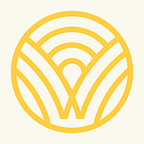PAEMST Spotlight: Tyronne McEuen
This week we’re spotlighting Washington’s state finalists for the Presidential Award for Excellence in Math and Science Teaching (PAEMST), who will go on to be considered for the national award in 2021. Check out the rest of our PAEMST Spotlight interview series here.
What has surprised you about teaching during a pandemic?
I was concerned that the ability to create and maintain a positive relationship between students and myself would be difficult. To my surprise, the relationships this year are stronger than in previous years. I believe the shared common experience of adjusting to a high school year that was previously unimaginable was the primary reason for establishing the strong relationships.
Is there a distance learning lesson that you are particularly proud of?
Pinpointing a particular lesson is like choosing your favorite student. What I am proud of is how successful my students were during the pandemic. I do have to say the technology learning curve was extensive for most students and teachers. Working together we learned to navigate and successfully use technology to increase opportunities for learning. As we learned the technology students have the freedom to explore and work on lessons throughout the day.
Overall many students were more successful in their learning than in a traditional classroom setting.
What is your greatest wish for school next year?
Next year I wish all members of the educational community to blend the best of remote learning with the strength of a traditional classroom. I believe we have the opportunity to achieve a 21st century learning environment for all students. The ability to access technology creates learning opportunities in and outside of the school building. Students experienced instant feedback, accessed long distance collaborations with students from around the country and world, and witnessed experts utilizing math in real world situations. The hope is to continue our work towards a rich learning environment meeting the needs and pathways for all students.
What advice would you give to parents or caregivers who want to incorporate more science and mathematical thinking into their students’ lives?
The advice I would give to parents and caregivers looking to improve their childs engagement in math is to establish a weekly game night. Playing board and card games creates conversations, develops cooperation, builds confidence, and teaches a growth mindset-skills needed in a modern math classroom.
Is there anything that has been easier to do in a remote school environment?
Compared to a traditional classroom it was easier to establish a deeper knowledge of each of my students’ lives. Technology allowed students to share their lives in a personal and safe way. I had the opportunity to visit with cousins, younger siblings, Grandma’s and uncles as they sat in on math lessons. I was rewarded with seeing family life, pets, hobbies, and taken on tours of homes and neighborhoods. The experience was amazing.
Can you think of a funny moment to share from the past year+ of teaching in the pandemic?
Having Zoom enter homes allowed various family members to be present off screen. During a Kahoot review, I once had a father log on another device to join in the game. Another student wondered outloud why there were two “Calebs’’ in the game; that’s when the father came clean and confessed his competitive nature got the best of him. He also mentioned how much he enjoyed the game. This became a running joke for the rest of the year.
What is one concept your students struggle most to understand and how do you try to address this struggle?
Students required support to develop time management skills. We spent time learning how to use electonic calendars and task lists to map out students’ activities, family time, scheduled classroom, and homework time. Providing students a visual map of their day.
Where do you see more opportunity for collaborating with other disciplines to teach math or science?
Traditionally, collaboration between math and other courses focused on STEM content.
Recently, I participated in meetings with CTE administrators from around the region. It became apparent that many of the CTE courses could be reclassified as STEM content. I believe this is an untapped area of collaboration. Examples of course collaborations could be: Geometry with both Metal and/or Wood Construction courses. First and Second year Algebra courses with computer programming and HVAC. Statistics with Business and Marketing.
What are some of the jobs and pathways you are most excited to see your students preparing for?
Students working towards a specific career prior to the pandemic are now having to rethink what that field will look like in the future. The switch to remote work and distance collaboration has become the norm for many careers. It is exciting to develop learning opportunities for students to master the variety of skills required to be successful in those environments.
Who have you been following or reading from a math and science perspective in the past year? Any other publications, blogs, etc. that you would recommend?
I tend to remain with the more established content creators like Jo Boaler (YouCubed), and Jennifer Gonzalez (Cult of Pedagogy). The information is research based, relevant to the current learning environments, and focuses on the ‘whole’ student. YourCubed reshapes math education research into accessible and practical applications. Cult of Pedagogy focuses on teaching strategies, classroom management, education reform and educational technology.
Whether it is a podcast or current article, both authors challenge my current pedagogy as I reflect on current practices, guiding the structure of future instructional environments.
